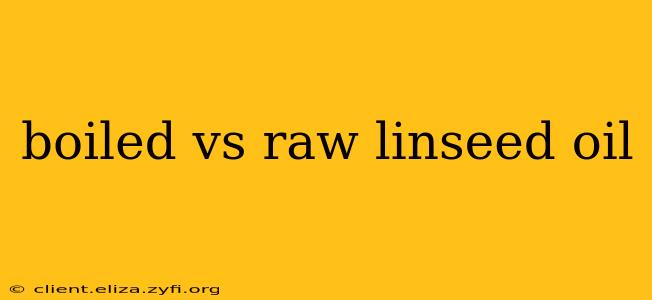Linseed oil, derived from flax seeds, is a popular choice for various applications, from wood finishing to paint making. However, the distinction between boiled and raw linseed oil is crucial for achieving the desired results. This comprehensive guide will explore the key differences, benefits, and optimal uses of each type.
What is Raw Linseed Oil?
Raw linseed oil, also known as unprocessed linseed oil, is extracted directly from flax seeds without any chemical alteration. It maintains its natural composition, rich in polyunsaturated fatty acids like omega-3s and omega-6s. This natural state makes it a slow-drying oil, requiring considerable time to cure properly.
Benefits of Raw Linseed Oil:
- Natural and Pure: Free from chemical additives, making it a preferred choice for those seeking environmentally friendly options.
- Deep Penetration: Its slower drying time allows for deeper penetration into wood, providing superior nourishment and protection.
- Food-Grade Availability: Some raw linseed oil is available in food-grade quality, suitable for consumption (though always check labeling).
What is Boiled Linseed Oil?
Unlike its raw counterpart, boiled linseed oil undergoes a process of heat treatment and sometimes the addition of driers (metallic compounds like cobalt or manganese). This process significantly accelerates the drying time, making it a practical choice for many applications. The term "boiled" is a historical misnomer; modern production methods use heat and catalysts rather than actual boiling.
Benefits of Boiled Linseed Oil:
- Fast Drying Time: The most significant advantage is its much faster drying time compared to raw linseed oil.
- Improved Durability: The addition of driers can contribute to a slightly harder and more durable finish.
- Suitable for Various Applications: The fast drying time makes it ideal for projects where quick turnaround is essential.
How Do Boiled and Raw Linseed Oil Differ?
The core differences lie in their drying time, chemical composition, and resulting properties:
| Feature | Raw Linseed Oil | Boiled Linseed Oil |
|---|---|---|
| Drying Time | Slow (days to weeks) | Fast (hours to days) |
| Chemical Composition | Natural, unaltered | Heat-treated, may contain driers |
| Viscosity | Thicker | Thinner |
| Durability | Potentially superior with proper curing | Slightly improved due to driers |
| Application | Wood finishing, painting (slow cure) | Wood finishing, painting (fast cure) |
| Safety | Generally safer due to lack of driers | Driers may present some health risks |
What is the Best Linseed Oil for Wood Finishing?
The choice between boiled and raw linseed oil for wood finishing depends on the project's specifics and personal preference.
-
Raw Linseed Oil: Ideal for projects where deep penetration and a natural finish are prioritized, even if it requires more patience during the curing process. It’s excellent for fine furniture or intricate woodwork.
-
Boiled Linseed Oil: Suitable for projects requiring faster drying times, like outdoor projects or larger pieces of furniture. The added durability can be beneficial in areas prone to wear and tear.
Is Boiled Linseed Oil Toxic?
While boiled linseed oil itself isn't inherently toxic, the driers added to accelerate drying can present some health risks. Always ensure adequate ventilation when working with boiled linseed oil and follow safety precautions outlined by the manufacturer. Skin contact should be avoided, and proper cleanup is crucial. Raw linseed oil is generally considered safer due to the absence of these added chemicals.
Can I Use Boiled Linseed Oil as a Wood Sealer?
Yes, boiled linseed oil can be used as a wood sealer, although it's not as effective as dedicated sealers. It provides some protection against moisture and stains but may not offer the same level of water resistance as specialized sealants.
Which Linseed Oil is Better for Painting?
For painting, both types can be used. Raw linseed oil is often preferred by artists for its slower drying time, allowing for blending and detail work. Boiled linseed oil is used in some oil-based paints to enhance their drying properties.
In conclusion, the choice between boiled and raw linseed oil depends heavily on the intended application and the desired outcome. Understanding their differences will help you make informed decisions and achieve the best results for your projects. Remember to always prioritize safety and follow manufacturer instructions when working with linseed oil.
